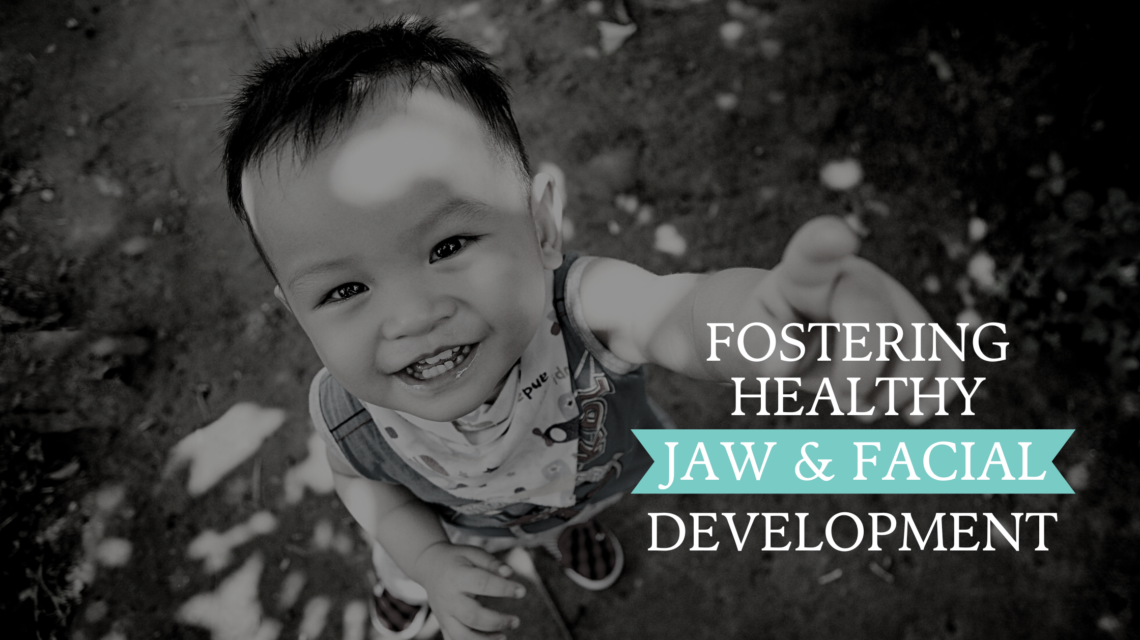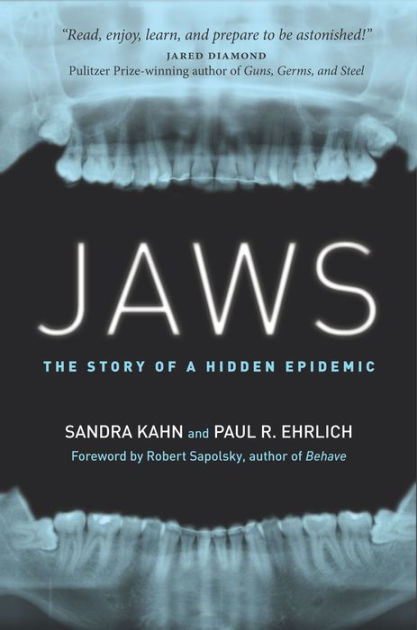3 Keys to Promoting Healthy Jaw and Facial Development in Infants and Children
As parents, ensuring the health and well-being of our children is always a top priority. One aspect of their health that is often overlooked but is vitally important is jaw and facial development. The development of the jaw and face impacts various aspects of a child’s life, from their ability to breathe properly, to the alignment of their teeth, and their spinal and TMJ health. Proper development in these areas can prevent a host of issues down the line, including crowded and crooked teeth, difficulty breathing, and even sleep apnea.
By taking proactive steps to promote healthy jaw and facial development in infants and children, parents can potentially avoid the need for costly and invasive procedures later in life, while also setting up their children for lifelong health. This blog post will delve into four key ways parents can support their children’s jaw and facial development, providing practical tips and insights for promoting oral and whole body health.
As a functional airway dentist, these are my biggest tips to encourage healthy jaw and facial development:
Encourage Proper Tongue Posture
The tongue plays a crucial role in not just speech and taste, but also in the development of the jaw and facial structures. It’s an incredibly strong muscle, and its function and positioning within the mouth can significantly impact the growth of the palate and the alignment of the teeth. In fact, the tongue is strong enough to exert 500g of force, and it only takes 1.7 grams of force to move a tooth! This powerful muscle determines the way the jaw will grow.
When the tongue rests against the roof of the mouth, it exerts gentle pressure that helps expand the palate naturally (nature’s braces!). This expansion creates more space for teeth as they erupt, reducing the likelihood of crowded or crooked teeth, and helps ensure the nasal cavity grows wide to support proper airflow and healthy breathing. In contrast, improper tongue posture, such as resting it low in the mouth, can lead to a narrow palate and insufficient space for teeth to come in properly, eventually requiring orthodontic intervention later in life.
Proper tongue posture also influences the positioning of the upper jaw, contributing to an aligned and balanced relationship between the upper and lower jaws. This plays a major role in temporomandibular (TMJ) health, postural and body alignment, the vestibular system, muscle balance, and so much more; it really is a domino effect.
So how can you encourage your little ones to practice proper tongue posture?
The whole tongue should be resting at the roof of the mouth. This means the tip, middle and back of the tongue should be suctioned to the upper palate. If there are any oral restrictions present, like a tongue tie, this can impact the tongue’s function and ability to rest properly on the upper palate. If you suspect any oral restrictions, I recommend getting an assessment from a provider that is familiar with tongue ties, like a certified dentist, doctor, or ENT.
With infants, one of the most practical and easy things we can do to encourage proper tongue posture is to encourage a lip seal. If you notice them sleeping with their mouth open, gently push their chin up and hold for a few seconds until the lips seal. This simple practice will encourage the mouth’s intraoral pressure dynamics to support a high tongue posture during rest and also encourage nasal breathing.
Additionally, using tools like a MyoMunchee with infants and children is a great, easy and practical way to encourage proper use of the tongue and facial muscles. It helps to promote proper tongue posture and nasal breathing and supports optimal jaw and facial development. With children who have chronically low resting tongue posture, seeing a myofunctional therapist is of great benefit. They will work with your child to address their individual concerns and needs and will help retrain the muscles of the tongue, face and mouth for optimal oral function necessary for oral and whole body health and wellbeing.
Establish Healthy Breathing Habits
Breathing is a fundamental aspect of our lives, and its impact extends far beyond simply supplying oxygen to our bodies. In the context of jaw and facial development, the way we breathe significantly influences the growth and alignment of these structures. When an infant or child is unable to breathe through their nose, they rely on mouth breathing. This seemingly harmless habit can set off a chain reaction of negative effects on not only oral and facial development but also systemic and whole body health.
Breathing and tongue posture go hand in hand, as chronic mouth breathing leads to a low resting tongue position, since that is naturally where the tongue falls as the mouth is open. This will hinder the natural development of the upper jaw, eventually leading to a narrow palate, crowded teeth, and jaw misalignment. Mouth breathing will also impact the development of the nasal cavity – the roof of the mouth is the floor of the nose – which is essential for maintaining a healthy airway and breathing habits. The nasal cavity acts as a natural filter, humidifier, and warmer of the air we breathe, preparing it for optimal absorption in the lungs.
It’s important to ensure our children have clear noses in infancy and childhood, so that nasal breathing becomes a natural habit. Establishing a nasal rinsing routine is a great way to do this! It can be used as an opportunity for the whole family to cleanse and clear their noses to support nasal breathing, which can make it a fun activity your children can look forward to. Some other practical tips to encourage nasal breathing are to keep a humidifier and air purifier in your child’s room. These will help keep the air moist, clean, and free of any irritants that may cause a child to rely on mouth breathing. By encouraging nasal breathing from an early age, parents can help set the stage for lifelong healthy breathing habits that will positively impact them throughout their growth and development and beyond.
Please see this blog post for product recommendations!
(((link previous blog: 6 Tips to Prevent Mouth Breathing in Infants and Children)))
Encourage Chewing
Encouraging infants and children to chew is fundamental to the healthy growth and development of their jaw and facial structures. Chewing stimulates the muscles of the jaw, promoting bone growth and proper alignment of the teeth. Beyond that, chewing has also been linked to correct swallow patterns, healthy digestion, and even concentration and memory! This one may seem obvious, but in our current society we are severely under chewing.
Throughout history, human’s jaws have gotten smaller and smaller. About 10,000 years ago, the shift from a predominantly hunter-gatherer society to increased settled agriculture caused some drastic shifts. The use of new tools and cooking food significantly reduced the amount of chewing required. Now in modern society, food is softer and more processed than ever before, outsourcing chewing for more convenience – squeeze packs, purees, and easy meals to maintain our busy lifestyles is the new way of life.
Luckily, there’s a lot we as parents can do in this department to encourage chewing and help stimulate healthy jaw growth. Starting in infancy, introducing different toys and tools like a MyoMunchee with a variety of textures in infancy is a fantastic way to do this and stimulate oral motor skills.
Check out my Amazon shop to see what chew toys I recommend:
Dr. Johal’s Chew Toy Recommendations (US)
Dr. Johal’s Chew Toy Recommendations (Canada)
Another critical way to stimulate jaw growth and development is with food! When infants move from milk to strictly purees and baby food, the jaws do not get the proper stimulus they need at such a critical time in their development. Introducing harder, more difficult to chew foods from an early age helps to strengthen the jaw muscles and promotes bone growth, allowing the jaw to develop to its full genetic potential. The best foods to get the jaws moving are hard, fibrous foods like whole raw vegetables, whole nuts and seeds, and meat on the bone. Try your best to stay away from or limit highly processed, soft foods as they deprive the jaw of the forces and exercise it needs for optimal growth. By incorporating nutrient dense whole foods into your child’s diet early on, this provides essential vitamins and minerals that are crucial in teeth and bone development.
The Takeaway
The more we know, the better we can help our children thrive. Helping to promote healthy jaw and facial development for our children will provide long term benefits for their overall health and well-being. Proper development in these areas can prevent issues such as crowded or crooked teeth, difficulty breathing, and even sleep issues. By taking proactive steps to encourage proper tongue posture, establish healthy breathing habits, and encourage chewing, parents can potentially avoid the need for costly and invasive procedures later in life, while also setting their children up for lifelong health.By incorporating these practices into their daily routines, parents can play a significant role in promoting optimal oral and whole body health for their children.
Recommended Reading
If you are interested in learning more about the science of healthy jaw and facial development and how it affects your optimal health, see below.
Encouraging infants and children to chew is vital for healthy jaw development, as it stimulates muscles, promotes bone growth, and aids in proper swallow patterns. Despite modern food conveniences, prioritizing hard, fibrous foods early on can optimize jaw growth and overall oral health. Additionally, incorporating chew toys and tools like a MyoMunchee will also help stimulate healthy jaw growth and development, as well as help foster healthy oral habits like correct tongue posture and nasal breathing. To dive deeper into this topic, I highly recommend the book “Jaws: The Story of a Hidden Epidemic” by Sandra Kahn and Paul R. Ehrlich.
More About Jaws
There’s a silent epidemic in western civilization, and it is right under our noses. Our jaws are getting smaller and our teeth crooked and crowded, creating not only aesthetic challenges but also difficulties with breathing. Modern orthodontics has persuaded us that braces and oral devices can correct these problems. While teeth can certainly be straightened, what about the underlying causes of this rapid shift in oral evolution and the health risks posed by obstructed airways?
Sandra Kahn and Paul R. Ehrlich, a pioneering orthodontist and a world-renowned evolutionist, respectively, present the biological, dietary, and cultural changes that have driven us toward this major health challenge. They propose simple adjustments that can alleviate this developing crisis, as well as a major alternative to orthodontics that promises more significant long-term relief. Jaws will change your life. Every parent should read this book.
.
Family Dental Centre Home Page: www.familydentalguelph.com










